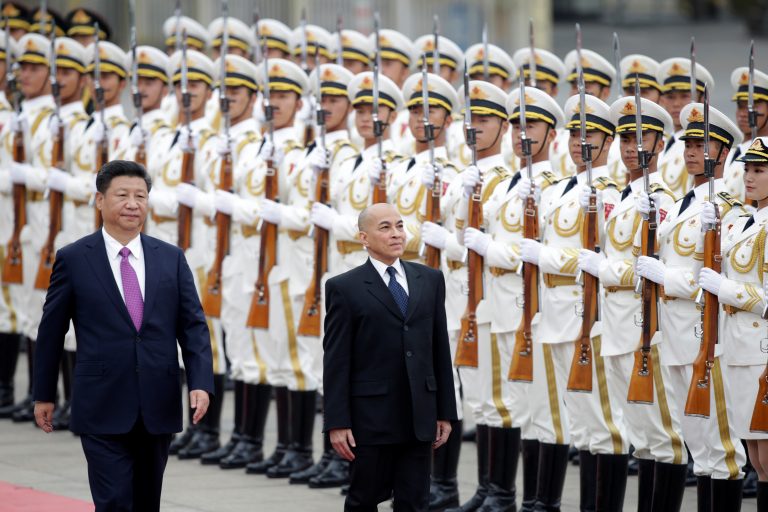Author: Abdul Rahman Yaacob, ANU
It has been over 40 years since Vietnamese military forces rolled into Cambodia and toppled the brutal Pol Pot regime. One of the drivers that led Vietnam to conduct a military campaign against Cambodia was its sense of strategic vulnerability, sandwiched between China to the north and the China-backed Cambodian regime to the south.

A declassified CIA document from February 1983 suggests that China encouraged the Pol Pot regime ‘in its hostility toward Vietnam’ in the years leading up to the invasion. During this time, the Khmer Rouge carried out raids in southern Vietnam while receiving weapons from China, including T-54 and T-63 tanks. Pol Pot’s refusal to engage diplomatically with Vietnam to settle their border disputes prompted the Vietnamese to launch a large-scale invasion of Cambodia in 1978.
Today, Vietnam is once again concerned about China’s growing defence ties with Cambodia. Hanoi fears that China is using Cambodia as a tool to pressure Vietnam on its southern border.
The South China Sea is a source of ongoing contention between Vietnam and China. Territorial disputes have previously led to bloody clashes with the Chinese navy, as demonstrated in the 1988 incident at Johnson South Reef.
China has consistently challenged Vietnam’s attempts to extract resources from within its exclusive economic zone (EEZ) in the South China Sea. On several occasions, China has successfully applied pressure on Vietnam to halt the development of oil fields within its EEZ. Vietnam’s fishermen have been attacked, harassed and robbed by Chinese Coast Guard vessels.
The presence of Chinese military facilities in the South China Sea further impairs Vietnam’s ability to access resources within its EEZ. These facilities enable Chinese naval assets to maintain a consistent presence throughout the South China Sea, disrupting the activities of regional states, including Vietnam.
Cambodia’s growing defence relations with China have affected Vietnam’s strategic calculus. Since Cambodia’s defence relations with the United States went awry in 2010, China has stepped in to fill the void. In that same year, Beijing supplied trucks and uniforms to Cambodia.
In recent years, China has also assisted Cambodia in developing its naval capabilities. This includes infrastructure development at Cambodia’s Ream Naval Base, which faces the Gulf of Thailand and is just 30 kilometres from the Vietnamese island of Phu Quoc. The deepening of the water around Ream Naval Base will enable larger warships, including those from China, to dock and operate in the area.
These recent developments around the naval base are a security concern for Vietnam. According to a Vietnamese official, there has been a sudden increase in Chinese personnel, equipment and materials being moved into the base since early April 2023.
Of even greater concern is the development of radar and surveillance capabilities near the Ream Naval Base. A government document shared by Cambodian officials with this article’s author details the allocation of about 187 hectares of land, including parts of Ream National Park, to the Cambodian Ministry of National Defence. Most of the land is assigned to the Royal Cambodian Armed Forces Air Defence Unit, while the rest has been designated for a naval radar system.
Improvements in Cambodian naval and air defence and surveillance capabilities around Ream Naval Base should not come as a surprise. Cambodian officials have previously pointed out the navy’s lack of communication and surveillance capabilities and the need to enhance the country’s air defence.
Developing the new defence facilities in Ream National Park would not involve Chinese presence or funding. Still, Vietnam is worried about a lack of transparency regarding Cambodia’s current construction activities at Ream Naval Base, worsened by the potential development of air defence facilities in the nearby national park.
According to the same Vietnamese official, Cambodia does not share details on the ongoing construction at Ream Naval Base with Vietnam, despite the countries having good relations. The official Cambodian government stance is that it would not allow any foreign military base to operate within Cambodia.
Despite this assurance from Cambodia, Vietnam’s officials perceive the development of air defence facilities in Ream National Park as a security concern, especially if China manages them. Any air surveillance radar would enable Chinese military personnel to track the movement of Vietnamese aircraft movement in southern Vietnam. Coupled with the possibility that China could operate its naval vessels from Ream Naval Base and target Vietnam’s interests, Beijing could ultimately threaten Vietnam from both the north and the south.
The debates surrounding China’s use of Ream Naval Base and nearby air defence facilities remain speculative. Once all the construction works are completed, a clearer picture will develop. Until then, Vietnam will continue to monitor the growing Cambodia–China defence relationship with wariness.
Abdul Rahman Yaacob is a PhD candidate at the National Security College, the Australian National University.
Some information for this article is drawn from correspondences and interviews with Cambodian and Vietnamese defence officials.
eastasiaforum.org

